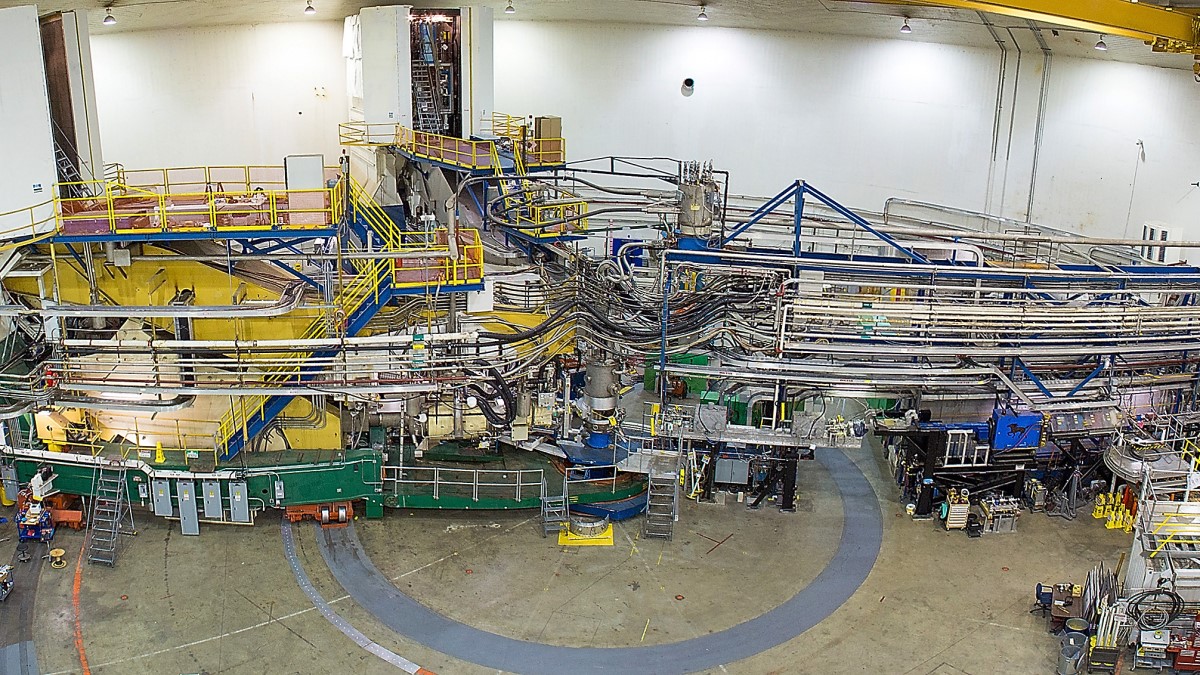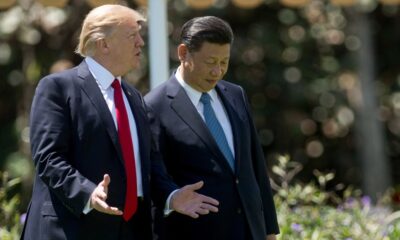Science
New Experiment Reveals Three-Nucleon Interactions at Jefferson Lab

An experiment conducted at Jefferson Lab in the United States has provided groundbreaking evidence of three-nucleon short-range correlations. The research, which utilized high-energy electron scattering on helium-3 and tritium nuclei, marks a significant step forward in our understanding of the interactions that define atomic nuclei and neutron stars.
Atomic nuclei consist of nucleons—protons and neutrons—that are held together by the strong force. These nucleons are not stationary; they can move rapidly within the nucleus. While they often act independently, they can also form correlated pairs, trios, and larger groups. Investigating this correlated motion is essential for revealing the interactions that govern the structures of both small nuclei and vast neutron stars.
The study, carried out in 2018, involved a series of electron scattering experiments designed to measure the momenta of nucleons. By directing high-energy electrons at the nuclei, researchers were able to isolate individual nucleons due to the smaller de Broglie wavelength of the electrons compared to the size of the nucleons. This process allows scientists to examine the momentum exchange between nucleons and electrons, providing valuable insights into nucleon correlations.
Significant Findings on Nucleon Interactions
According to John Arrington from the Lawrence Berkeley National Laboratory, the discovery of three-nucleon interactions, although a minor contribution, is crucial for understanding nuclear properties. “Until now, there’s never really been any indication that we’d observed them at all. This work provides a first glimpse at them,” he stated.
The research team, which included Arrington and an international group of physicists, analyzed data from the electron scattering experiments targeting helium-3 and tritium. These isotopes are particularly valuable for studying three-nucleon correlations because they contain exactly three nucleons, eliminating the complexities that arise from interactions involving larger groups.
Tritium, consisting of one proton and two neutrons, and helium-3, which has two protons and one neutron, are known as “mirror nuclei.” The strong force binding nucleons acts equally on protons and neutrons, yet there are subtle differences in the interactions between these particles. By contrasting the results from the tritium and helium-3 experiments, researchers can gain deeper insights into these differences.
Aiming for Clarity in Nuclear Science
Principal investigator Shujie Li emphasized the importance of their findings, stating, “We’re trying to show that it’s possible to study three-nucleon correlations at Jefferson Lab even though we can’t get the energies necessary to do these studies in heavy nuclei.” The use of lighter systems like helium-3 and tritium provides a clearer picture of these correlations, justifying the efforts required to work with radioactive materials.
Both helium-3 and tritium are rare isotopes. Helium-3 is produced through the radioactive decay of tritium, which is generated in nuclear reactors. Working with tritium presents challenges due to its half-life of approximately 12 years and its toxicity when ingested or inhaled. The research team developed a specialized cryogenic chamber to safely contain tritium gas during their experiments.
The analysis of the scattering experiments yielded promising indications of three-nucleon short-range correlations. Future research will focus on determining the nature of these correlations, such as whether three nucleons can become correlated simultaneously or if a pre-existing correlated pair can interact with a third nucleon.
Understanding three-nucleon interactions is believed to be vital for elucidating the properties of neutron stars, suggesting that research on small nuclei may illuminate the complexities of these massive celestial bodies. As Arrington pointed out, “It’s much easier to study a three-nucleon correlation in the lab than in a neutron star.”
The findings from this research are documented in the journal Physics Letters B, marking a pivotal moment in nuclear physics and our quest to comprehend the fundamental forces of the universe.
-

 Entertainment1 month ago
Entertainment1 month agoAnn Ming Reflects on ITV’s ‘I Fought the Law’ Drama
-

 Entertainment2 months ago
Entertainment2 months agoKate Garraway Sells £2 Million Home Amid Financial Struggles
-

 Health1 month ago
Health1 month agoKatie Price Faces New Health Concerns After Cancer Symptoms Resurface
-

 Entertainment2 months ago
Entertainment2 months agoKim Cattrall Posts Cryptic Message After HBO’s Sequel Cancellation
-

 Entertainment1 month ago
Entertainment1 month agoWhere is Tinder Swindler Simon Leviev? Latest Updates Revealed
-

 Entertainment2 months ago
Entertainment2 months agoMasterChef Faces Turmoil as Tom Kerridge Withdraws from Hosting Role
-

 Entertainment1 month ago
Entertainment1 month agoCoronation Street’s Carl Webster Faces Trouble with New Affairs
-

 Entertainment3 months ago
Entertainment3 months agoSpeculation Surrounds Home and Away as Cast Departures Mount
-

 World1 month ago
World1 month agoCole Palmer’s Mysterious Message to Kobbie Mainoo Sparks Speculation
-

 Entertainment1 month ago
Entertainment1 month agoITV’s I Fought the Law: Unraveling the True Story Behind the Drama
-

 Entertainment3 weeks ago
Entertainment3 weeks agoCaz Crowned Winner of The Great British Sewing Bee, Overjoyed by Triumph
-

 Entertainment2 months ago
Entertainment2 months agoAldi Launches Cozy Autumn Fragrance Range Ahead of Halloween




















